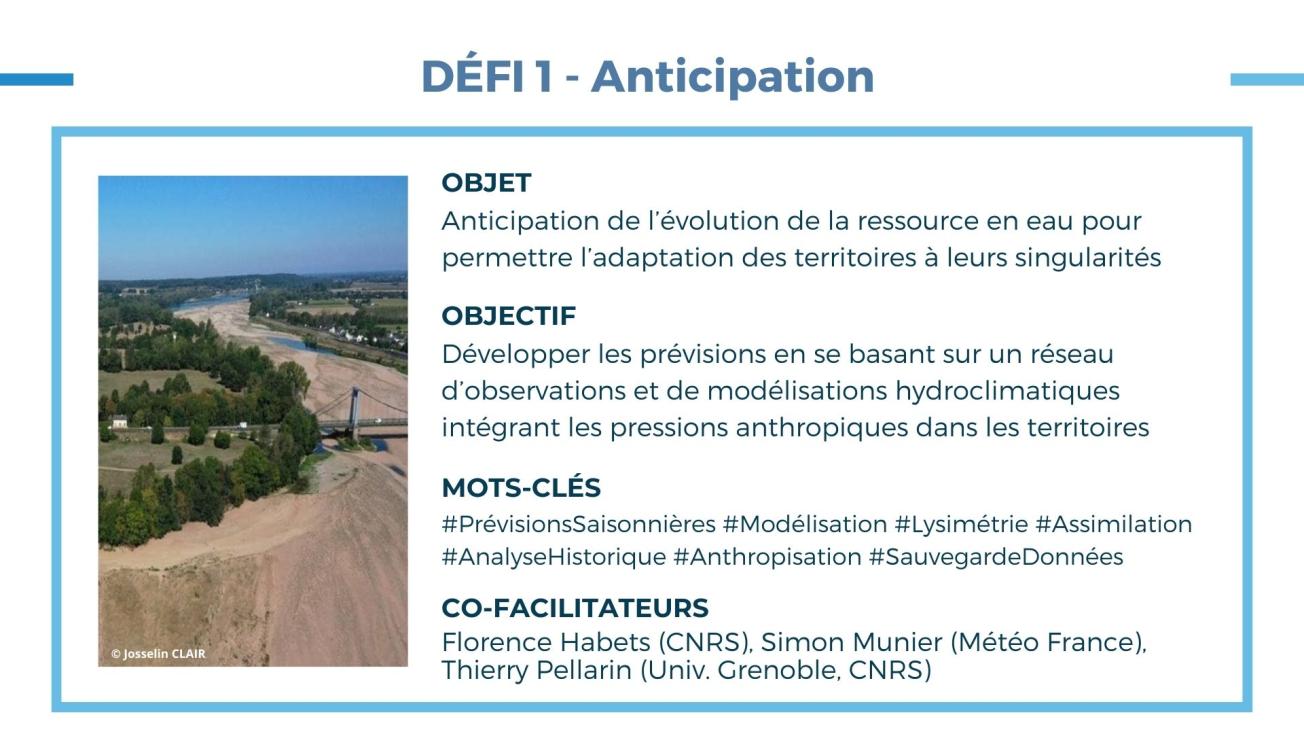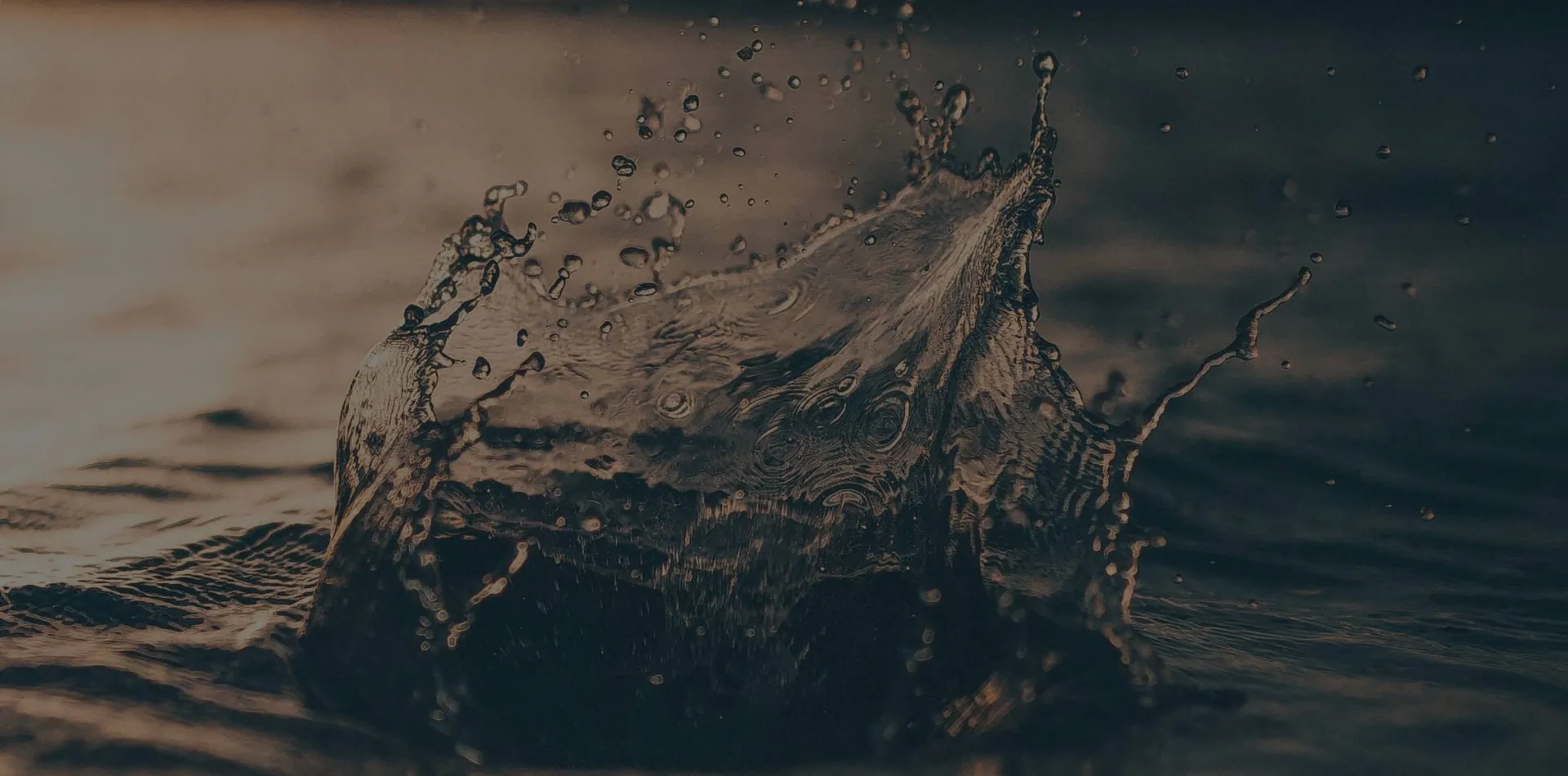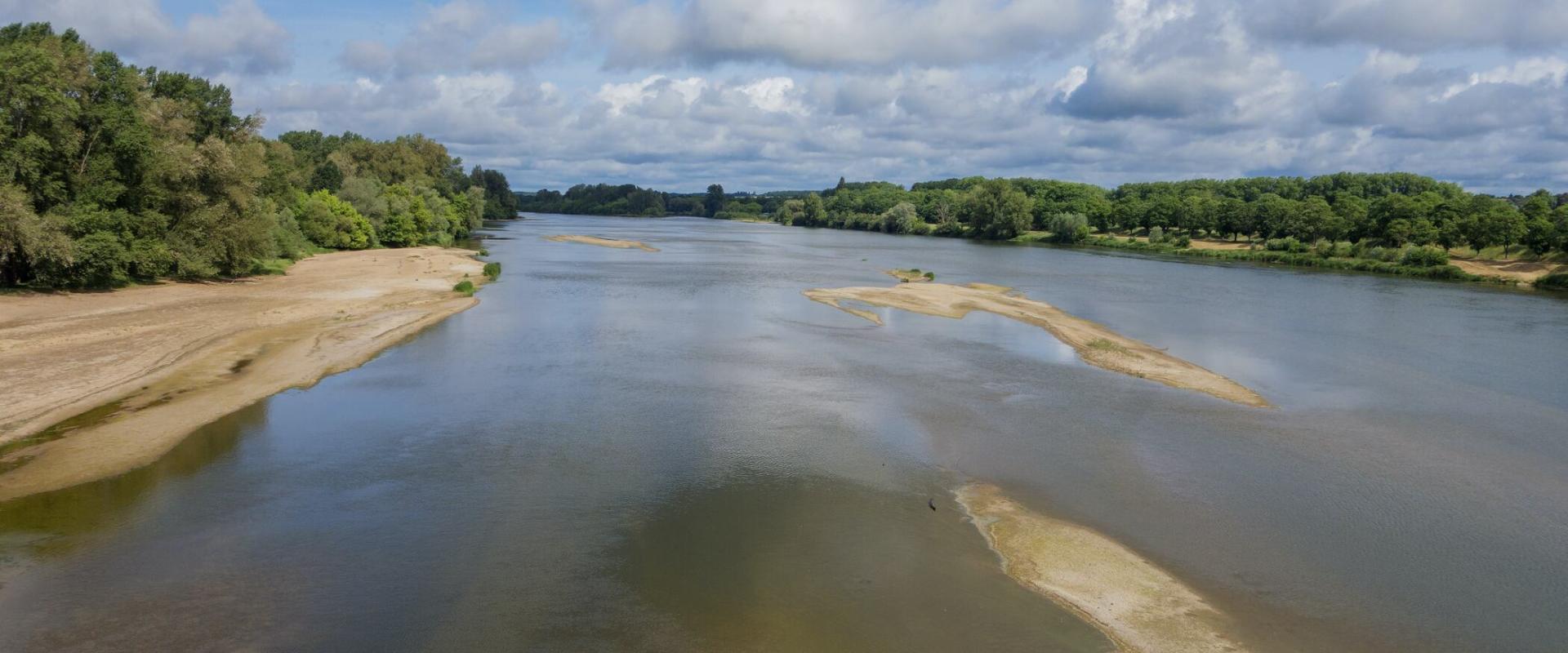Co-facilitators



Presentation
Challenge 1 involves estimating water resources in France over the past few decades and using forecasts for the next six months. The aim is to gain a better understanding of the conditions under which extreme climatic phenomena can occur, to better anticipate risk situations through three main actions:
1. Developing a national lysimeter network to acquire information on rainfall distribution between evaporation, run-off and infiltration, and to characterize the dynamics of groundwater recharge. The network must enable the acquisition of data on a daily basis at least, with real-time transmission at existing sites. To facilitate this, lysimeters (the most cost-effective models possible) will be tested and assessed, then installed at certified sites.
2. Improving historical hydro-meteorological re-analyses to reconstitute the history of water catchments. This involves integrating old data, using high-resolution meteorological models and incorporating the impact of human activities on hydrology.
3. Enhancing two existing seasonal hydro(geo)logical forecasting platforms dedicated to low-water flows and groundwater. This will involve:
- Building multi-model seasonal meteorological forecasts corrected for regionalization.
- The spatial extension of these platforms by integrating new digital models and/or applications.
- Improving initial conditions by developing data assimilation methods.
- Integrating, in forecast mode, the anthropogenic impacts on water resources, such as abstractions, water diversion and dams.

Défi 1 - Anticipation de l'évolution de la ressource en eau
© OneWater

